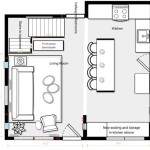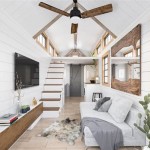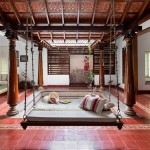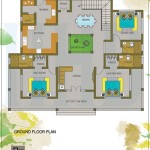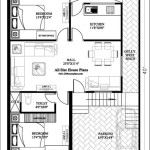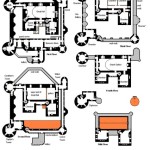UCLA Housing Floor Plans: A Comprehensive Guide
UCLA offers a diverse range of on-campus housing options designed to cater to the varying needs and preferences of its undergraduate and graduate students. Understanding the available floor plans is crucial for prospective residents to make informed decisions about their living arrangements. This article provides a detailed overview of the different housing floor plans offered by UCLA, focusing on key aspects such as room types, dimensions, amenities, and typical layouts, helping students navigate the housing application process and choose the best fit for their individual requirements.
The types of floor plans available differ depending on whether the student is an undergraduate or graduate student and which specific housing complex is being considered. Undergraduate housing primarily consists of traditional residence halls, suites, and plazas, while graduate housing encompasses apartments and suites. This distinction directly influences the floor plan options accessible to each student cohort. Furthermore, the building's construction date and renovation history can also affect floor plans, with newer buildings often incorporating more modern designs and features.
Undergraduate Residence Halls: Classic and Contemporary Options
Undergraduate residence halls represent the traditional UCLA on-campus living experience. These halls typically offer double or triple occupancy rooms, meaning that two or three students share a single room. Floor plans in these halls generally follow a similar structure. Each floor usually features a communal bathroom for residents on that floor, and many halls provide common areas or lounges for socializing and studying. Classic residence halls, such as Hedrick Hall or Dykstra Hall, are characterized by their more standard room dimensions and more straightforward layouts.
A typical double room in a classic residence hall can be estimated at approximately 12 feet by 16 feet, while a triple room might extend to around 16 feet by 20 feet. These dimensions are approximate and can vary slightly within the same hall or across different buildings. Room furnishings usually include a bed, desk, chair, and closet or wardrobe for each resident. Some rooms might also include built-in storage or shelving. The floor plans for these halls prioritize functionality and maximizing space within a shared environment. Communal bathrooms are generally located near the center of each floor, accessible to all residents. Study lounges, often equipped with tables, chairs, and sometimes computers, provide dedicated spaces for academic work outside of the individual rooms.
Contemporary residence halls, often those built or renovated more recently, may offer more variations in floor plans. These halls may include single rooms in addition to double and triple occupancy ones. Furthermore, they often incorporate more modern design elements, such as larger windows, enhanced lighting, and improved ventilation systems. Floor plans might also feature more flexible layouts that allow for better customization of the living space. For instance, some rooms may have movable furniture or adjustable shelving systems. An example of a contemporary hall is De Neve Plaza, with modern amenities and slightly more spacious rooms compared to the older halls.
The dimensions of rooms in contemporary halls can vary significantly. Single rooms might range from 8 feet by 12 feet to 10 feet by 14 feet, while double and triple rooms may be slightly larger compared to those in classic halls. The location of communal bathrooms might also differ, with some contemporary halls featuring smaller bathrooms shared by a smaller number of residents. Common areas in these halls often include recreational spaces, such as game rooms or media lounges, in addition to study areas. The floor plans in contemporary halls aim to provide a more comfortable and convenient living experience by incorporating modern amenities and flexible layouts.
Undergraduate Suites and Plazas: Increased Privacy and Community
Undergraduate suites and plazas offer a different style of living compared to traditional residence halls. A suite typically consists of several bedrooms that share a common living area and bathroom. Plazas, like Sproul Plaza or Rieber Vista, offer a mix of suite-style and traditional configurations. Floor plans in suites and plazas prioritize increased privacy and a greater sense of community among a smaller group of residents.
A common suite layout includes two or three bedrooms, each accommodating two or three students, connected by a shared living room and bathroom. The bedrooms typically contain the same furnishings as those in residence halls, including beds, desks, chairs, and closets. The shared living room provides a common space for residents to socialize, study, or relax. The size of the living room can vary depending on the specific suite configuration. The bathroom is usually equipped with multiple sinks, showers, and toilets to accommodate the needs of the residents. Floor plans in suites are designed to provide a balance between individual privacy and communal living, allowing residents to interact and support each other while maintaining their personal space.
The dimensions of individual bedrooms in suites are often similar to those in residence halls, ranging from approximately 12 feet by 16 feet for double rooms to 16 feet by 20 feet for triple rooms. The living room can vary in size, but a typical living room might measure around 12 feet by 18 feet. The bathrooms are usually smaller, designed to efficiently serve the residents of the suite. Some suites may also include additional features, such as a small kitchenette or a balcony. Floor plans in plazas, which may include a mix of suite-style and traditional configurations, can vary more widely. These plazas often offer additional amenities, such as outdoor courtyards, recreational facilities, and dining halls. The floor plans are designed to foster a sense of community and provide a convenient and enjoyable living experience for residents.
The location of suites and plazas within the UCLA campus also influences the overall living experience. Suites and plazas are often located in more central areas of the campus, providing convenient access to academic buildings, libraries, and recreational facilities. This proximity can be a significant advantage for students who want to minimize their commute time and maximize their involvement in campus activities. The floor plans in suites and plazas are designed to support a vibrant and engaging living environment that promotes academic success and personal growth.
Graduate Housing: Apartments and Suites for Independent Living
Graduate housing at UCLA offers a more independent living experience compared to undergraduate housing. Graduate housing primarily consists of apartments and suites designed to accommodate the needs of graduate students, who often require more space, privacy, and amenities. These floor plans typically include private bedrooms, kitchens, and bathrooms, allowing graduate students to live more independently and focus on their academic pursuits.
Apartment floor plans in graduate housing can vary widely in terms of size and configuration. Some apartments may be designed for single occupants, while others may accommodate two or more students. A typical apartment might include one or two bedrooms, a living room, a kitchen, and a bathroom. The bedrooms are usually furnished with a bed, desk, chair, and closet. The living room provides a common space for residents to relax, study, or entertain guests. The kitchen is typically equipped with a refrigerator, stove, oven, and sink, allowing residents to prepare their own meals. The bathroom is usually private and includes a toilet, sink, and shower or bathtub. Floor plans in graduate apartments are designed to provide a comfortable and convenient living environment that supports the academic and personal needs of graduate students.
The dimensions of apartments in graduate housing can vary significantly depending on the specific building and unit. A studio apartment, designed for a single occupant, might range from 400 to 600 square feet. A one-bedroom apartment might range from 600 to 800 square feet, while a two-bedroom apartment might extend to 800 to 1000 square feet or more. The location of apartments within the graduate housing complex also influences the overall living experience. Some apartments may be located in quieter areas, while others may be closer to common areas or amenities. Floor plans in graduate housing are designed to provide a balance between privacy, independence, and community, allowing graduate students to thrive in their academic and personal lives.
Suite floor plans in graduate housing are often similar to those in undergraduate suites, but they typically offer more privacy and amenities. A graduate suite might consist of several private bedrooms that share a common living area and bathroom. The bedrooms are usually furnished with a bed, desk, chair, and closet. The shared living room provides a common space for residents to socialize, study, or relax. The bathroom is usually private and includes a toilet, sink, and shower or bathtub. Some suites may also include a small kitchenette or a balcony. Floor plans in graduate suites are designed to provide a comfortable and convenient living environment that supports the academic and personal needs of graduate students.
Ultimately, understanding the nuances of UCLA's housing floor plans allows prospective residents to make informed decisions. Room dimensions, amenities, and layouts vary significantly across different residential complexes and room types. By carefully reviewing the available options and considering their individual needs and preferences, students can select the floor plan that best suits their lifestyle and contributes to a positive and productive on-campus experience.

Glenrock Housing

Weyburn Terrace Apartments Housing

433 Midvale Ucla Student Housing
Ucla Extension 2024 Summer On Campus Housing Information
Ucla Extension 2024 Summer On Campus Housing Information

Plaza Rooms Ucla Conferences Catering

Overnight Accommodations Ucla Conferences Catering

University Of Los Angeles Meeting And Event Space Unique Venues

Hedrick Study By Johnson Favaro At Ucla 2024 11 01 Architectural Record

433 Midvale Ucla Student Housing

